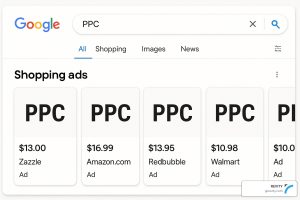In today’s digital landscape, having an SEO-friendly website is the key to online success and visibility. Whether you’re a business owner, a blogger, or an aspiring entrepreneur, understanding and implementing SEO practices can make a world of difference in driving organic traffic to your website.
For those new to SEO, Search Engine Optimization is the art and science of optimizing your website to improve its visibility and ranking on search engine results pages (SERPs). If your site isn’t optimized for SEO purposes, you’ll have a hard time getting any organic traffic at all.
In this blog post, we’ll deeply dive into the details of an SEO-friendly website and explore some website seo basics that you can implement immediately. Whether you’re a beginner looking to learn the basics or a seasoned marketer seeking to enhance your existing website SEO strategy, we’ve got you covered.
Get ready to unlock the secrets of SEO in website design and take your site to new heights!
The Importance of SEO
In today’s digital age, where search engines have become the go-to resource for information, the significance of SEO in website design cannot be overstated. With billions of websites competing for attention, a solid website SEO strategy is no longer just an option – it’s necessary. Why? Because effective SEO allows your website to rise above the noise, making it more discoverable and accessible to your target audience.
One of the key benefits of SEO is increased visibility. When your website ranks higher in search engine results pages, it is more likely to be seen by users actively searching for products, services, or information related to your industry. By optimizing your website’s content and structure, you can align it with the search intent of your target audience, ensuring that your website appears in front of the right people at the right time.
But visibility alone is not enough. SEO also plays a crucial role in driving organic traffic to your website. Unlike paid advertising, which requires ongoing investment, organic traffic results from your website’s relevance, authority, and trustworthiness.
By implementing SEO best practices, you can attract high-quality organic traffic that has a genuine interest in what your website offers. This targeted traffic will likely convert into leads, customers, or subscribers, ultimately boosting your bottom line.
Furthermore, SEO in website design is a long-term investment with lasting benefits. Unlike other marketing channels that may deliver short-term results, SEO builds a strong foundation for your website’s online presence. You establish credibility and trust with search engines by consistently optimizing your website and adhering to best practices. Over time, this can lead to higher rankings, increased organic visibility, and a sustainable flow of organic traffic that continues to generate value for your business.
15 Practices You Can Implement Now
Now that we understand the importance of SEO and its impact on your website’s visibility, it’s time to roll up our sleeves and get down to business. In this section, we’ll talk about 15 tried and tested practices you can implement today to boost your website’s SEO performance.
From keyword research to technical optimization and content creation, these website SEO basics encompass a wide range of strategies that will help you optimize every aspect of your website.
Let’s get started!
1. Keyword Research
Keyword research forms the foundation of any successful website SEO strategy. By identifying the right keywords and phrases, you can align your website’s content with the search queries that your target audience is using. This practice enables you to optimize your website effectively and increase your chances of ranking higher in search engine results.
To start your keyword research process, put yourself in the shoes of your target audience. Consider the terms they might use when searching for products, services, or information related to your industry. These keywords should be relevant, specific, and aligned with your website’s content and objectives.
Utilize keyword research tools to discover popular and relevant keywords in your niche. These tools provide valuable insights into search volume, competition, and related keywords, helping you decide which keywords to target.
Once you have a list of potential keywords, analyze their competitiveness and search volume. Strike a balance between highly competitive keywords that may be more challenging to rank for and long-tail keywords with lower competition but can still drive targeted traffic to your website.
Additionally, consider user intent when choosing keywords. Are users looking for information, seeking to make a purchase, or trying to solve a problem? Understanding user intent will help you optimize your content to meet their needs effectively.
Keep in mind that keyword research is an ongoing process; you can’t just do it once and then ignore it. Stay updated with current trends, monitor the performance of your chosen keywords, and make adjustments as necessary.
2. Optimize Title Tags
Title tags are HTML elements that define the title of a web page, and they play a key role in conveying the context and relevance of your content to both search engines and users.
To optimize your title tags, start by ensuring they accurately reflect the content of each web page. Craft concise and compelling titles that capture the essence of your page while incorporating relevant keywords. Aim for a length of around 50 to 60 characters to ensure they display fully in search results.
Include your primary keyword or keyphrase in the title tag, preferably near the beginning. This helps search engines understand the subject matter of your page and improves the chances of ranking higher for relevant searches. However, avoid keyword stuffing or excessive repetition, which can harm your SEO efforts.
3. Create Compelling and Shareable Content (While Using Keywords)

By crafting content that resonates with your target audience, you provide value and increase the likelihood of attracting backlinks and social shares. To maximize your content’s impact, you should strategically integrate relevant keywords.
When developing your content, make sure that you use the keywords you found and incorporate them naturally throughout your content. They should flow seamlessly throughout the blog.
However, it’s crucial to strike a balance and avoid keyword stuffing. Focus on creating high-quality, informative, and engaging content that addresses the needs and interests of your audience. Search engines are becoming increasingly sophisticated at understanding context and user intent, so prioritize creating content that offers real value rather than solely catering to keyword density.
4. Use Heading Tags
Heading tags serve multiple purposes, such as structuring your content, highlighting key points, and signaling the relevance of different sections. By utilizing heading tags effectively, you can improve the organization and readability of your content while also improving the SEO of your website.
To start, make sure to include an H1 tag, which represents the main heading of your page. The H1 tag should feature a concise and descriptive title that accurately represents the page’s content. This helps search engines understand the primary topic and sets the stage for what follows.
For subheadings within your content, use H2 tags. Break your content into logical sections and introduce each new topic with an H2 tag. This allows search engines and users to navigate your content easily and comprehend its structure.
Incorporating lower-level heading tags, such as H3, H4, and so on, is beneficial for further breaking down your content into subsections. These lower-level headings provide additional organization and hierarchy, making it easier for readers to navigate through different sections.
When using heading tags, it’s a good practice to include relevant keywords within the headings strategically. This helps search engines understand the context and relevance of your content. However, it’s important to maintain a natural flow and avoid excessive keyword usage that may detract from the readability of the headings.
5. Optimize URL Structure
A well-optimized URL structure helps search engines understand the content and relevance of your web pages and improves the overall user experience. By following best practices for URL optimization, you can enhance your website’s visibility and make it more user-friendly.
When optimizing your URL structure, it is important to create URLs that are concise, descriptive, and indicative of the content on the respective pages. A clear and relevant URL provides search engines and users with a quick understanding of what they can expect on the page. Avoid using generic or random combinations of numbers and characters in your URLs.
Including relevant keywords (you might notice a theme here between a lot of these sections; keywords are important for SEO) in your URLs can be beneficial for search engine visibility. By incorporating keywords that accurately reflect the topic or focus of the page, you provide search engines with additional context.
However, it is crucial to strike a balance and avoid keyword stuffing in URLs, as this can be seen as spammy and detrimental to your SEO efforts. Only use the keywords where it is natural to do so.
6. Optimize Images
Optimizing the images on your website is crucial for improving both the visual appeal and performance of your web pages. When it comes to image optimization, there are several important factors to consider.
Firstly, choose the right image format for each image. JPEG is commonly used for photographs or images with many colors, while PNG is suitable for images with transparency or simple graphics. The appropriate format ensures a good balance between image quality and file size.
Compressing your images is another vital step in image optimization. Large image file sizes can slow down your website’s loading speed. Utilize image compression techniques to reduce file sizes without compromising image quality. Many online tools and software are available to help you achieve optimal compression.
Assigning descriptive file names to your images is essential for SEO. Instead of generic names like “IMG_12345.jpg,” use descriptive file names that reflect the image content. Incorporate relevant keywords in the file name.
Another crucial aspect of image optimization is the use of alt text. Alt text provides a textual description of the image content and is an alternative for users who cannot view images, such as visually impaired individuals. This also helps site crawlers “see” the picture.
7. Improve Your Sites Loading Speed
The loading speed of your website plays a critical role in user experience, search engine rankings, and overall site performance. Slow-loading websites can frustrate visitors, increase bounce rates, and hinder conversions.
8. Create a Sitemap
A sitemap serves as a blueprint of your website, outlining its structure and providing search engines with a clear path to navigate and index your pages effectively. Let’s explore how you can create a comprehensive sitemap for your website.
To begin, you should first understand the purpose of a sitemap. A sitemap acts as a directory that lists all the pages on your website, organized hierarchically. It helps search engines discover and understand the relationship between different pages, ensuring they are appropriately indexed.
When creating your sitemap, ensure that it includes all the relevant pages of your website. This includes your homepage, main category pages, individual product or service pages, blog posts, and any other significant content you want search engines to index. By including all relevant pages, you increase the visibility and accessibility of your content to both search engines and users.
It’s important to regularly maintain and update your sitemap as you add new pages or make changes to your existing content. By keeping your sitemap up to date, you provide search engines with accurate information about your website’s structure, allowing them to crawl and index your pages more efficiently.
Once you have created or updated your sitemap, it’s crucial to submit it to search engines. Most search engines allow you to submit your sitemap for indexing. By submitting your sitemap, you inform search engines about the structure of your website, helping them discover and index your pages effectively.
9. Secure Your Website

Ensuring the security of your website is one of the website SEO basics and is practically necessary in today’s digital landscape. Implementing robust security measures helps protect your website and visitors from threats like cyberattacks, data breaches, and malicious activities.
By taking proactive steps to secure your website, you can instill trust in your users and safeguard your valuable online assets. Invest in SSL certificates, regularly update your software and plugins, use strong passwords, implement a web application firewall, and regularly back up your website to mitigate risks and fortify the security of your online presence.
10. Optimize Navigation and Internal Linking
An optimized website navigation and internal linking structure contribute significantly to user experience and search engine optimization. A well-designed navigation system allows visitors to navigate your site effortlessly, finding the information they need quickly and easily. Additionally, internal linking helps search engines understand the relationships between different pages on your website, enhancing the overall visibility and accessibility of your content. Here are a few key considerations for optimizing navigation and internal linking.
Firstly, ensure your navigation menu is straightforward, intuitive, and easy to use. Organize your menu items logically, using descriptive labels that accurately represent the content within each section. Consider implementing dropdown menus or subcategories to enhance navigation efficiency, particularly for larger websites with extensive content.
Furthermore, include search functionality on your website to allow users to search for specific information quickly. Implementing a search bar prominently in your navigation or header area can save users valuable time and improve their overall experience.
When it comes to internal linking, strategically incorporate relevant anchor text within your content to link to other pages on your site. This helps users discover related information and enables search engines to crawl and index your content more effectively. However, avoid excessive or unnecessary internal links, as they can confuse users and dilute the relevance of your content.
11. Link to other High-Quality Sites
When you strategically link to reputable and authoritative sites, you provide additional value and resources to your visitors while signaling to search engines that you are part of a reliable online network. Here are some key considerations when linking to other high-quality sites.
Choose relevant and trustworthy websites that align with your content and audience. Look for websites known for their expertise, credibility, and industry relevance. Linking to such sites not only enhances the user experience by providing valuable information but also signals to search engines that your website is associated with reputable sources.
When linking to external sites, use descriptive anchor text that accurately represents the linked page’s content. Avoid generic phrases like “click here” or “read more” and instead use keywords or phrases that provide context and improve the user experience. Descriptive anchor text also helps search engines understand the relevance and context of the linked content.
It’s important to note that while linking to high-quality external sites can be beneficial, be selective and avoid excessive linking. Focus on quality rather than quantity.
12. Set Up Your Google Business Profile
Setting up a Google Business Profile is crucial in establishing your online presence and improving your website’s visibility in local search results. A Google Business Profile allows you to manage your business information, interact with customers, and appear in Google Maps and local search listings.
13. Monitor Performance
Monitoring the performance of your website is crucial to understanding its effectiveness, identifying areas for improvement, and making data-driven decisions to enhance your SEO efforts. Regularly tracking and analyzing key metrics can gain valuable insights into your website’s performance and make informed optimizations.
Start by setting up a web analytics tool, such as Google Analytics, to track important metrics like website traffic, user behavior, conversion rates, and more. Install the tracking code on all website pages to ensure comprehensive data collection. With analytics in place, you can delve into the performance of your website and gain a deeper understanding of how users interact with your content.
Keep an eye on your website’s overall traffic metrics, including the number of visitors, page views, and unique visitors. These metrics provide an overview of your website’s reach and popularity. Analyze trends over time to identify patterns, seasonality, or significant changes that may impact your website’s performance.
Dive deeper into user behavior metrics to understand how visitors navigate your site, which pages they spend the most time on, and where they may be exiting prematurely. This information can help you optimize your website’s structure, improve user experience, and guide visitors toward desired actions.
Pay attention to your website’s conversion metrics, such as goal completions, form submissions, or e-commerce transactions. Tracking conversions allows you to assess the effectiveness of your call-to-actions, landing pages, and overall conversion funnel. You can implement targeted optimizations to improve your website’s conversion rate by identifying areas where conversions are lacking.
14. Update Content Regularly
Regularly updating your website’s content is crucial for maintaining relevance, engaging your audience, and improving your search engine rankings. Fresh and updated content not only keeps visitors coming back for more and signals to search engines that your website is active and provides valuable information.
Updating your content helps to keep your website relevant and up-to-date. As industries evolve, new trends emerge, and information changes, ensuring that your website reflects the latest developments is important. Regularly updating your content can provide your audience accurate, timely, and valuable information, establishing your website as a reliable and trustworthy resource.
Additionally, updating content signals to search engines that your website is active and regularly provides fresh information. Search engines like Google tend to favor websites that consistently provide new and relevant content. By updating your content regularly, you increase the likelihood of search engines crawling and indexing your pages more frequently, improving your chances of ranking higher in search engine results.
15. Stay Up-to-Date with Best Practices
While this technically isn’t an SEO practice you can implement into your site, it’s extremely important.
In the ever-evolving world of SEO, staying up-to-date with the latest trends, algorithm updates, and industry best practices is crucial. By continuously learning and adapting to the changing landscape of search engine optimization, you can ensure that your website remains competitive, maintains its visibility, and drives organic traffic.
Take time to perform a website SEO analysis to determine what could be updated or fixed in relation to new best practices. SEO analysis will help you determine if your site follows best practices.
Transform Your Website with Revity
Ready to make your website SEO-friendly and drive more traffic, leads, and conversions? Contact Revity today and let our team of experts help you achieve your digital marketing goals. With our proven strategies and customized solutions, we can elevate your online presence and deliver tangible results.
Don’t miss out on the opportunity to maximize your website’s potential. Partner with Revity and experience the difference of working with a marketing agency that is dedicated to your success. Our team will work closely with you to understand your unique business needs, conduct in-depth research, perform a website SEO analysis of your current site, and implement effective strategies tailored to your industry and target audience.
Whether you’re a small business looking to establish a strong online presence or a large enterprise aiming to stay ahead of the competition, Revity has the expertise and experience to deliver exceptional results. Our comprehensive SEO services encompass keyword research, on-page optimization, technical SEO, content creation, and more.
Contact us today by calling us at 801-890-5284 or by using our online form to schedule a consultation and discuss how Revity can help you achieve your SEO goals.
Don’t settle for mediocre SEO results – trust Revity to provide you with the cutting-edge techniques and personalized attention your website deserves.
































